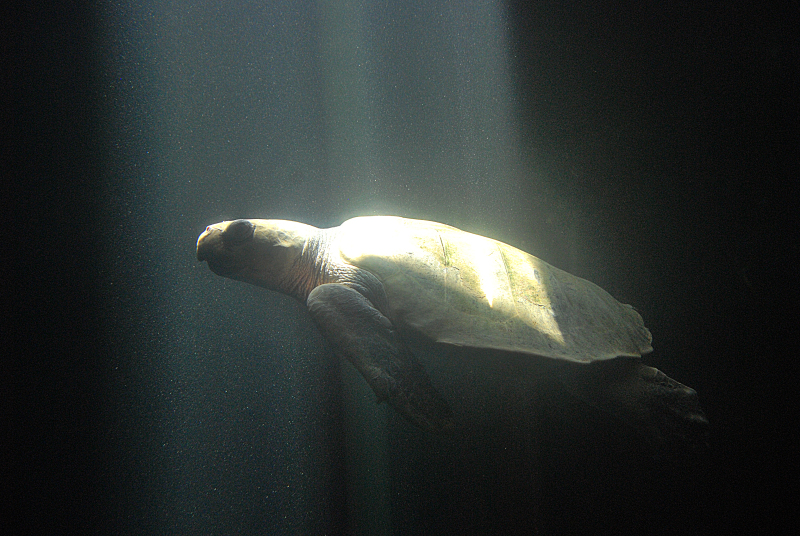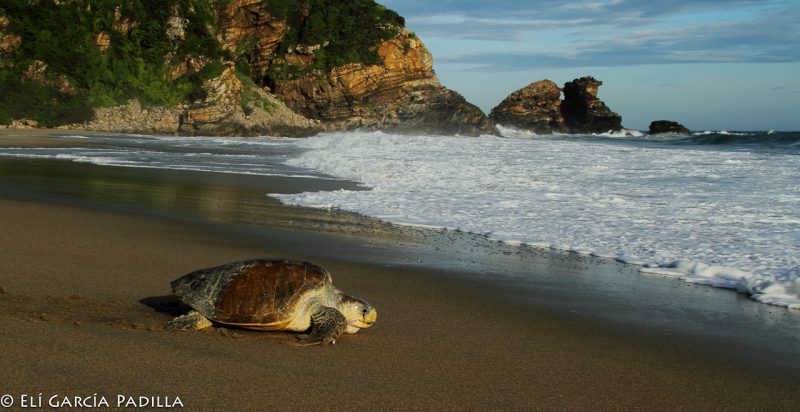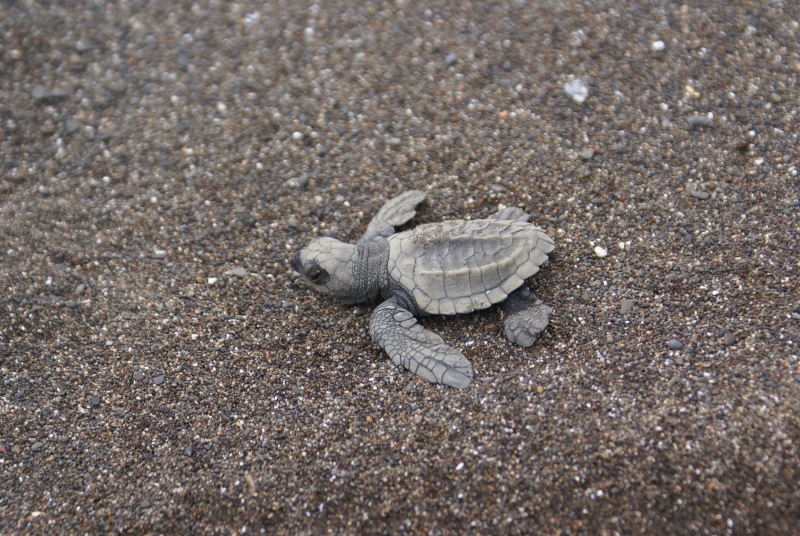Colours
Distinguishing features
The heart-shaped carapace is characterized by four pairs of pore-bearing inframarginal scutes on the bridge, two pairs of prefrontals, and up to 9 lateral scutes per side.
They are unique in that they can have variable and asymmetrical lateral scute counts ranging from five to ninee plates on each side, with six to eight being most commonly observed.
Each side of the carapace has twelve to fourteen marginal scutes. The carapace is flattened dorsally and highest anterior to the bridge.
It has a medium–sized, broad head that appears triangular from above. The head's concave sides are most obvious on the upper part of the short snout.
It has paddle-like forelimbs, each having two anterior claws. The upperparts are grayish green to olive in color, but sometimes appear reddish due to algae growing on the carapace.
The bridge and hingeless plastron of an adult varies from greenish white in younger individuals to a creamy yellow in older specimens.
Hatchlings are dark gray with a pale yolk scar, but appear all black when wet. Carapace length ranges from 37 to 50 mm. A thin, white line borders the carapace, as well as the trailing edge of the fore and hind flippers.
Both hatchlings and juveniles have serrated posterior marginal scutes, which become smooth with age. Juveniles also have three dorsal keels; the central longitudinal keel gives younger turtles a serrated profile, which remains until sexual maturity is reached. (Wikipedia)
Size
- Up to 70 cm (Carapace length)
Synonyms
Distribution
Distribution and habitat preferences
The olive ridley turtle has a circumtropical distribution, living in tropical and warm waters of the Pacific and Indian Oceans from India, Arabia, Japan, and Micronesia south to southern Africa, Australia, and New Zealand. In the Atlantic Ocean, it has been observed off the western coast of Africa and the coasts of northern Brazil, Suriname, Guyana, French Guiana, and Venezuela. Additionally, the olive ridley has been recorded in the Caribbean Sea as far north as Puerto Rico. It is also found in the eastern Pacific Ocean from the Galapagos Islands and Chile north to the Gulf of California, and along the Pacific coast to at least Oregon Migratory movements have been studied less intensely in olive ridleys than other species of marine turtles, but they are believed to use the coastal waters of over 80 countries.
Most observations are typically within 15 km of mainland shores in protected, relatively shallow marine waters. They are occasionally found in open waters. The multiple habitats and geographical localities used by this species vary throughout its life cycle. (Wikipedia)
Diet
It is predominantly carnivorous, especially in immature stages of the life cycle. Animal prey consists of protochordates or invertebrates, which can be caught in shallow marine waters or estuarine habitats. Common prey items include jellyfish, tunicates, sea urchins, bryozoans, bivalves, snails, shrimp, crabs, rock lobsters, and sipunculid worms. Additionally, consumption of jellyfish and both adult fish (e.g. Sphoeroides) and fish eggs may be indicative of pelagic (open ocean) feeding. It is also known to feed on filamentous algae in areas devoid of other food sources. (Wikipedia)




